It’s about providing choice in reflection tools
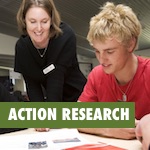 Personalized Learning Plans (PLPs) across the state have taken many different forms and serve a few different purposes. One common thread among educators is a wondering of how to increase student engagement in the PLP process. How to make it more meaningful and relevant. Michael Willis, Jared Bailey, and middle grades student Hudson, accepted this challenge and over the course of the year, conducted action research on what might actually work. The three of them presented the results of that research to a packed audience at the Vermont Middle Grades Conference at the University of Vermont, this past January. Below, you’ll find a video recording of the presentation that includes the presenters’ materials. And below that, we’ve laid out that recorded presentation as a text for you to read, again accompanied by the presenters’ materials. A huge thank you to Mr. Willis, Mr. Bailey and Hudson, for sharing this story.
Personalized Learning Plans (PLPs) across the state have taken many different forms and serve a few different purposes. One common thread among educators is a wondering of how to increase student engagement in the PLP process. How to make it more meaningful and relevant. Michael Willis, Jared Bailey, and middle grades student Hudson, accepted this challenge and over the course of the year, conducted action research on what might actually work. The three of them presented the results of that research to a packed audience at the Vermont Middle Grades Conference at the University of Vermont, this past January. Below, you’ll find a video recording of the presentation that includes the presenters’ materials. And below that, we’ve laid out that recorded presentation as a text for you to read, again accompanied by the presenters’ materials. A huge thank you to Mr. Willis, Mr. Bailey and Hudson, for sharing this story.
Solving the mystery of PLPs
Mr. Willis: “Last summer was the fourth MGI (Middle Grades Institute) that I’ve been to and I decided that I would do something around student engagement in PLPs. One, I don’t know that much about them. I hadn’t had any practice with the kind of official version using Protean, which we use in Williston. As a third and fourth grade teacher, I had done goal setting and reflecting and using blogs. But, that was all fine and good until you put the label of “PLP” on it. Then it seems that the attitude, as probably a lot of you know, starts to suddenly change.
I was just texting my daughter (who is now in high school) and she asked what I was presenting on, and I told her and she went, “Oh, that’s boring. PLP is so boring.” I asked her why? She said she didn’t know. So there’s this shroud of mystery around them. So I thought I would try to engage students differently by just giving them some different options of how to reflect.
Putting the pieces together
I did want to try and give students some options of how to reflect. The idea of setting a goal wasn’t brand new. The idea of collecting evidence wasn’t brand new, but the idea of how to reflect? That was kind of a sticky wicket. I thought, well, maybe video, maybe audio, maybe some photos, which they were pretty comfortable doing. Maybe just: how could it be less about writing? So that’s where this came from. I did this survey in the beginning of the year:
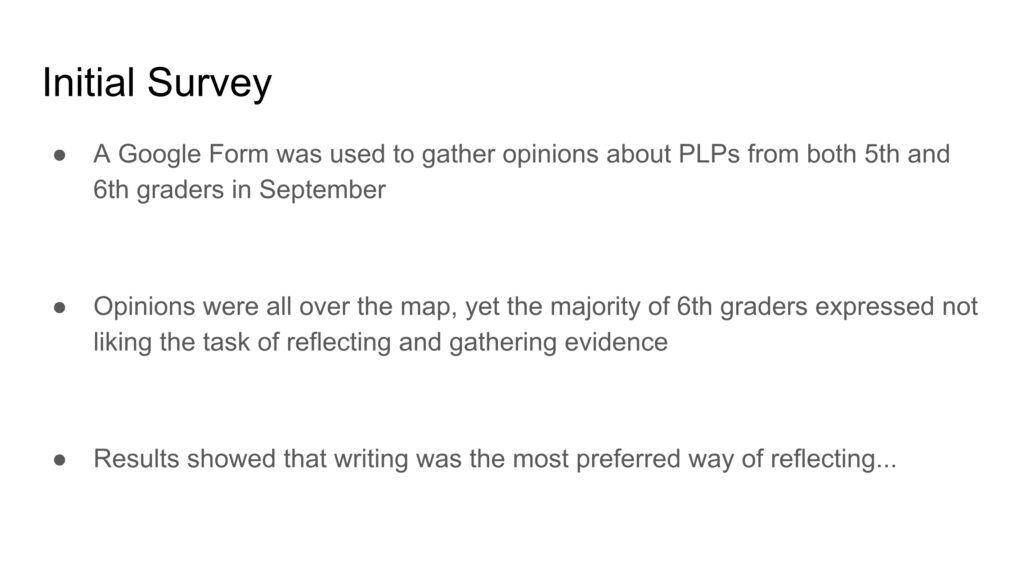
What did our data say?
Well, the opinions were all over the map in terms of what students think about PLPs, specifically. But in terms of what they thought about reflecting, the majority of students still prefer written reflections. I thought it was interesting if given the choice, students chose writing, yet nobody’s seemed to like the idea of having to do that writing. It’s a mystery!
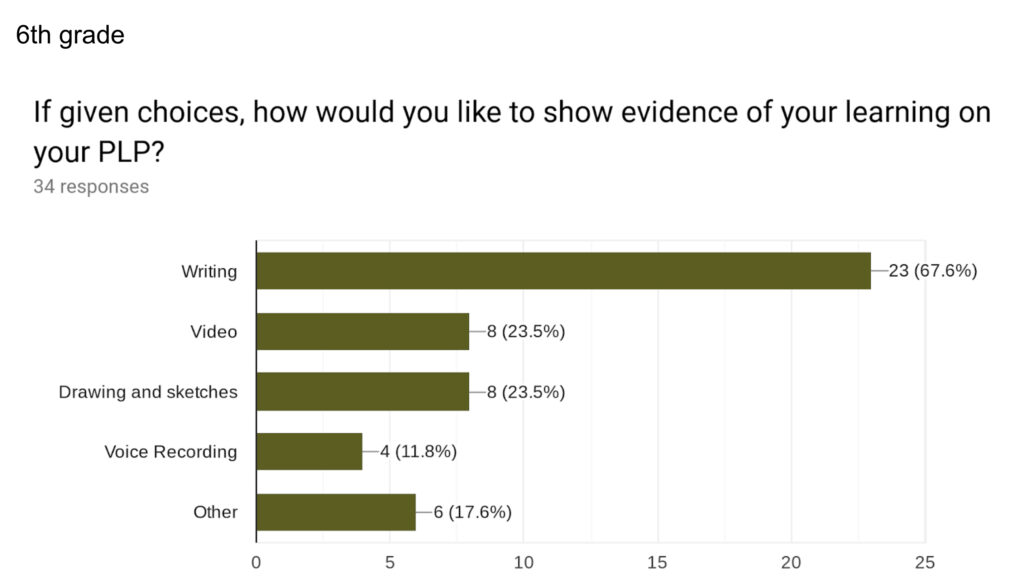
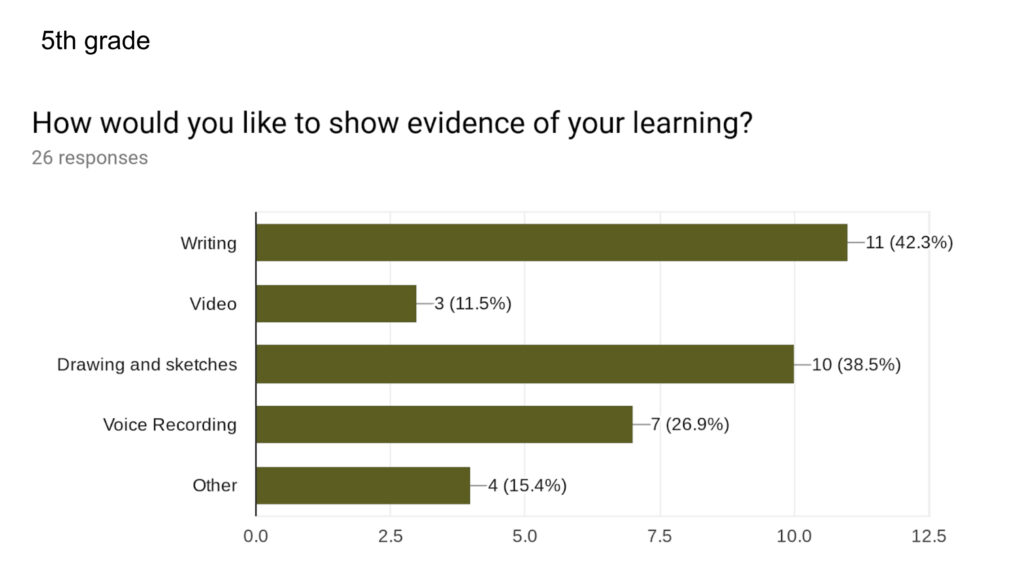
The fifth graders were really my trial group. Two times a week we meet in skills group and we do a number of things. But over the last month or so we’ve been thinking about PLPs.
Enter Sketchnoting!
Can you Hudson, talk a little bit about what your experience has been with goal setting and having to collect evidence?
Hudson: I did start out. I did write a goal but it was just hard because I had to write all the other responses to that goal, like my evidence. Then I did something called sketchnoting and it’s like you basically draw a quick sketch and then you draw and then you write like a few little captions. And it just like helped me out a lot.
Mr. Willis: When I said that they were clear in their opinions about having choice, I wondered if they really believed that they have a choice. It occurred to me after talking to Hudson was that maybe they didn’t know they had all these options. You’re going to find that both the fifth and the sixth grade believe that having choices is important yet… I don’t know if they thought they had choices available.
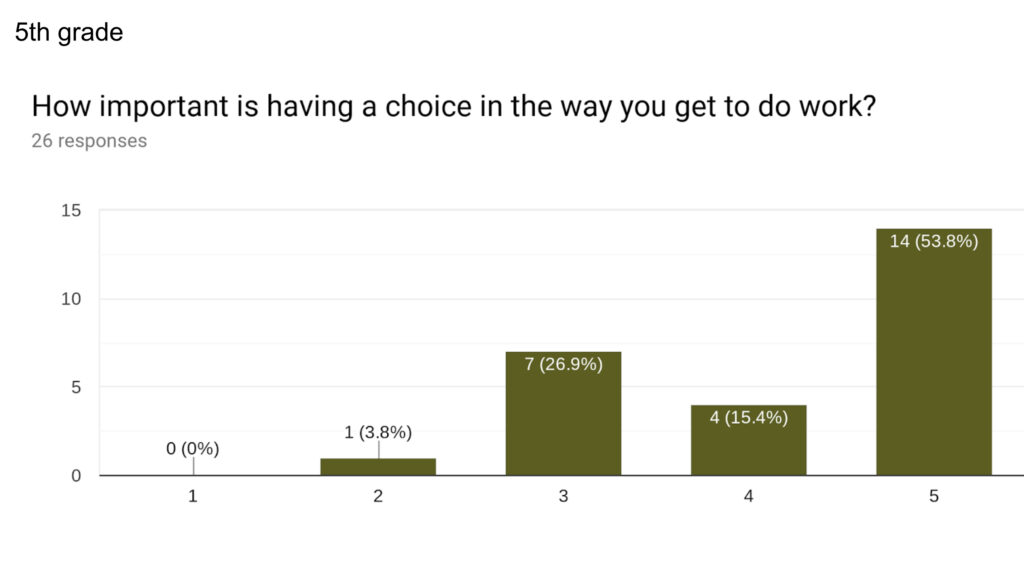
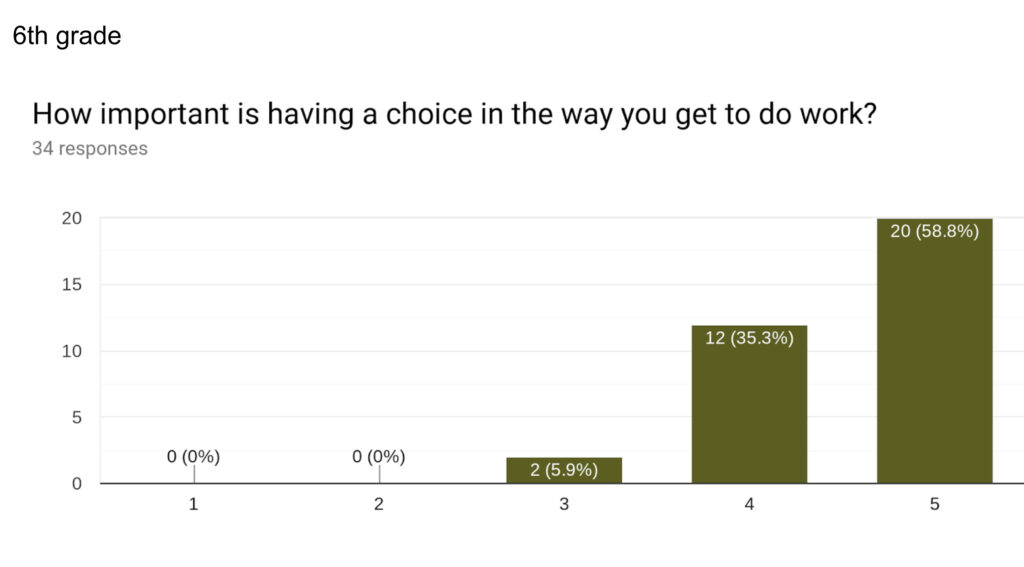
Reflection doesn’t have to be museum quality
Last summer, I first heard of sketchnoting. Now, I’m a writer. I communicate better in writing and I’m not a drawer. I told Hudson my sketchnoting would be stick figures and well you said to me—
Hudson: It doesn’t really have to be like a perfect sketch, like museum or any kind of… quality.
Mr. Willis: That to me? Is perfect news. And I think that’s the message that so I just dove right in. Now, I’m also the kind of person who doesn’t necessarily do all of this reading first, to be honest. I just dive in. We did a month-long integrated unit about trash and waste, relating to content areas. We called it garbology. That’s a new word, Google Docs didn’t recognize it. We piloted it. Thank you. I showed them a video from Brainpop about waste management and said there aren’t a lot of rules here, go for it. Not every student liked it. Below you can see definitely one of the kind of flashier, more complete versions that I got. But the idea that a student could do this without much instruction, without much guidance really sold me on the idea of, well, maybe it could be used for a reflection on your PLP.
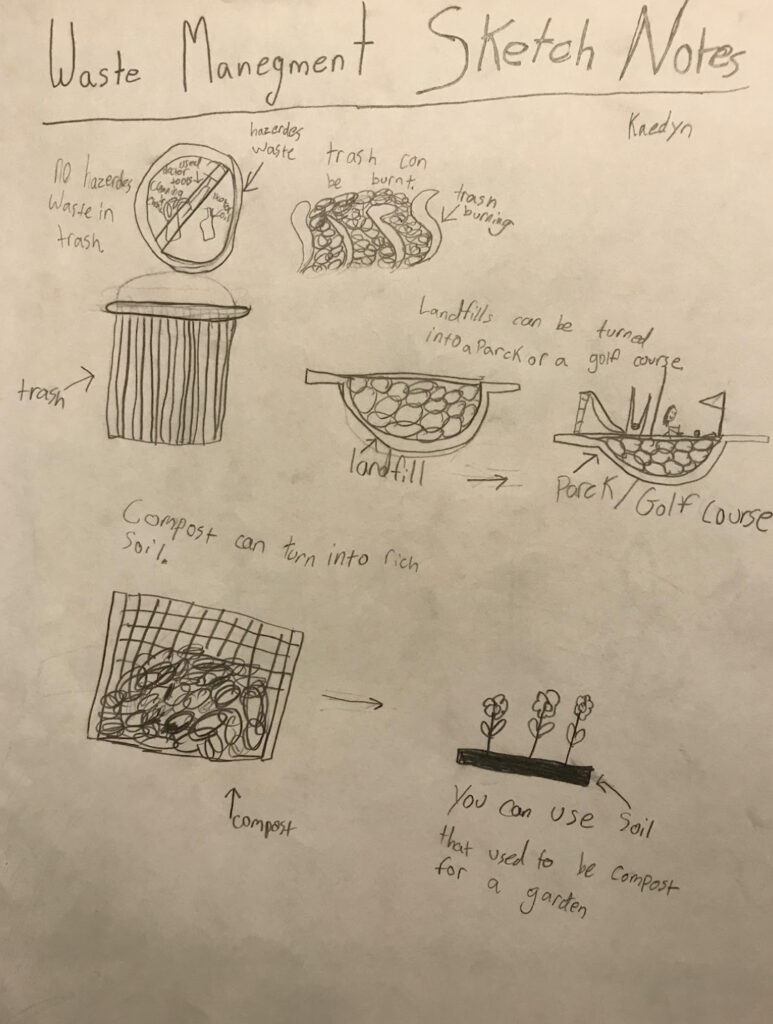
Sketchnoting from a student perspective
Hudson, the reason that you’re here is that sketchnoting did appeal to you. Right? You said it doesn’t have to be a museum piece. How does writing make you feel?
Hudson: It gets me a little stressed and I just feel like it’s writing [the same thing] all over again every week.
Mr. Willis: What is it about writing that kind of gives you that feeling?
Hudson: Just staring at a screen and typing the whole time when you could be drawing and doing quick little like notes just like what I really like to do.
Examples, organizers, and responsibility, oh my…
Mr. Willis: I learned that students would reflect on their PLP after the summative activities in the unit. One of their complaints is that we only do this after summative activities and I thought, well that’s true, but one thing at a time. How can we make that action, that activity perhaps be a bit more engaging, and have this idea of choice? Here’s a student example I thought was interesting:
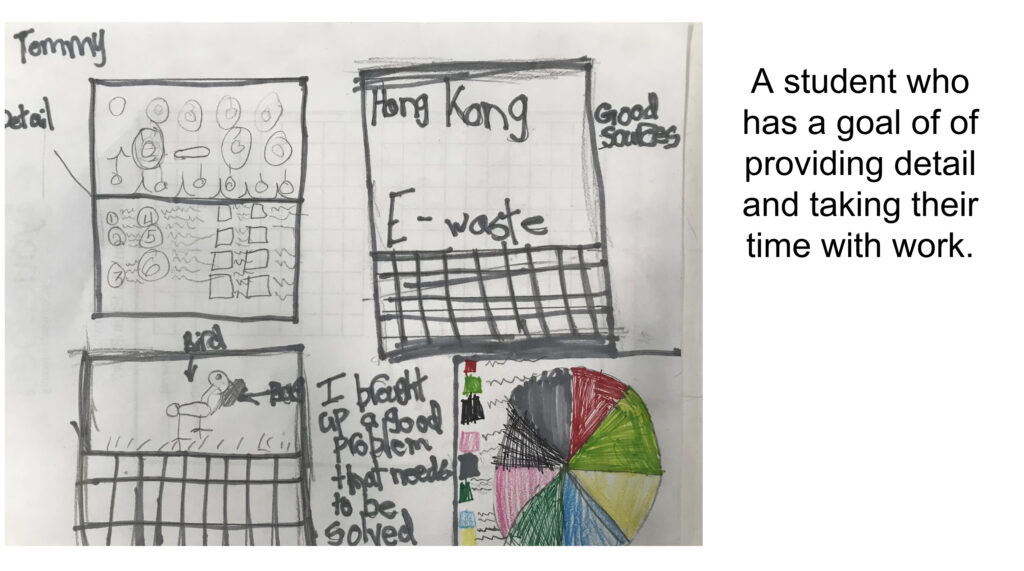
Mr. Bailey was doing the social studies piece. This idea of this graphic organizers came first and I thought was interesting with this student taking responsibility. They’ve got the goal listed to take initiative and responsibility for learning. This person actually, you see the picture of the house. We don’t always chat. I’m busy teaching the math piece and they’re doing theirs and seeing the student reflect and say, look, I did some of this at home. I did it in class.
That was new for me. I had no idea that student was even doing that. I know the student loves to draw. So, this seemed like a natural choice for this one but the learning that I got from it, I’m not sure would have come out in writing. I appreciated that piece.
An example of visual reflection via sketchnote
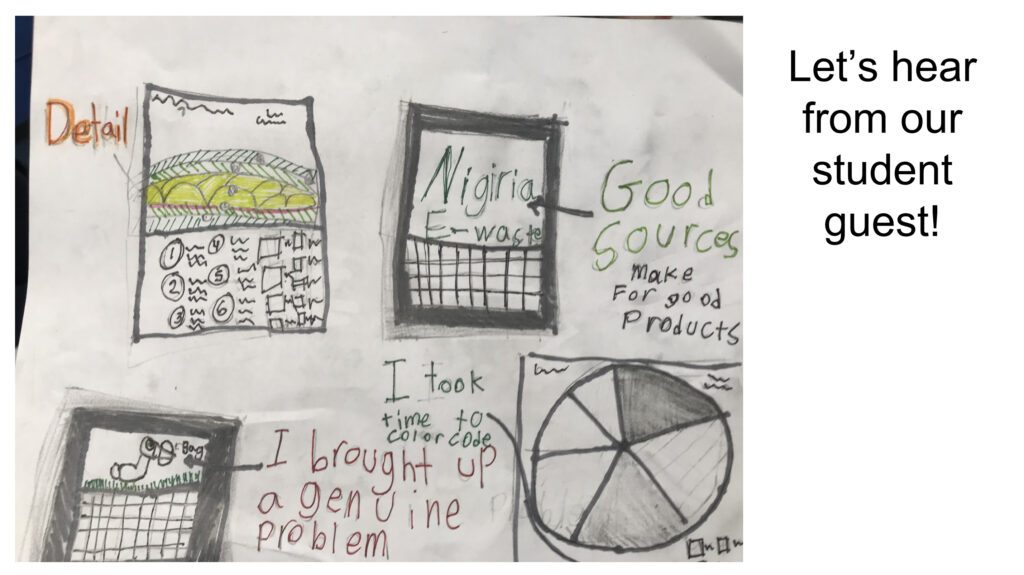 Now, Hudson and his tablemate, Tommy really were two that dove into this idea of being able to use sketchnoting, this idea of visually reflecting. Hudson, what does this show about your work on the integrated unit?
Now, Hudson and his tablemate, Tommy really were two that dove into this idea of being able to use sketchnoting, this idea of visually reflecting. Hudson, what does this show about your work on the integrated unit?
Hudson: Well, this just shows all my classwork that I did on computers and on paper.
Mr. Willis: What made this work for you?
Hudson: Well, it wasn’t really writing, but it was, so, I used like a cycle WeVideo and it was kind of cool and just like put in like little clips of videos. Then I got good sources. Like what I said, good sources makes for good products. I don’t mean a product like a computer kind of product, I mean a good piece of classwork.
Mr. Willis: I like that you’ve got those visuals. So those people who don’t end up in Washington that have no idea about what we did during our unit, I’m feeling like we look at this graphing shows up in math. What’s this on the left hand side? You said it brought up a genuine problem.
Hudson: It was about how marine animals and animals are getting sick in the oceans
Hudson: Yeah, are getting hurt by that.
Mr. Willis: Then the top left hand one, what does that detail mean? So, you’ve got this drawing, it’s pretty detailed…
Hudson: By detail I mean, I added stuff for like color coding and…
Mr. Willis: Now, was that a goal of yours, detail?
Hudson: Not really.
Student opinions on sketchnotes
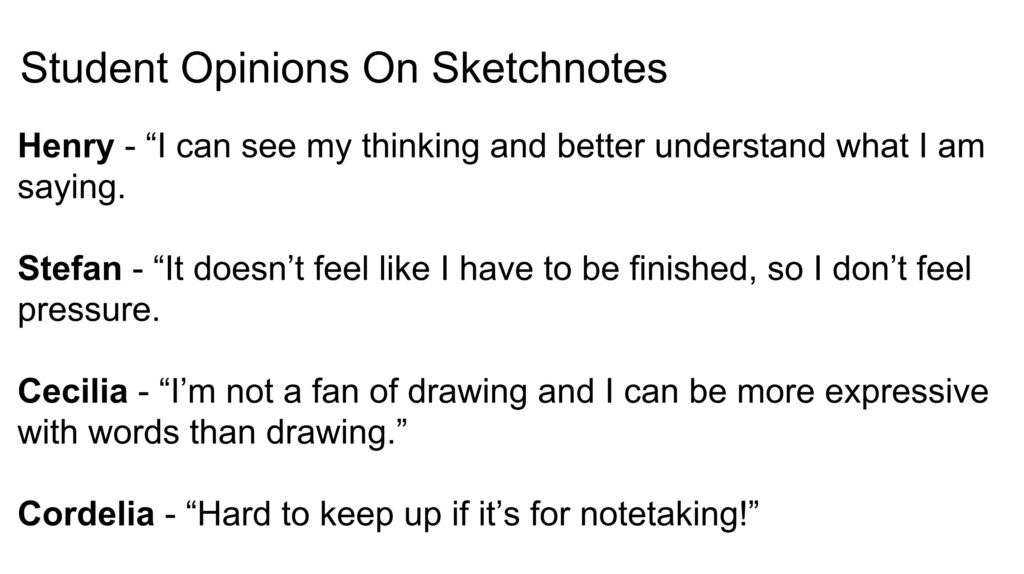
Mr. Willis: A couple of the top two students, you can see this idea of what Hudson was saying. “I don’t feel the pressure”, “I don’t feel this idea that has to be perfect when I do it”, “I can see my thinking” and they can communicate visually. The bottom two I thought were interesting because they are people that actually, students that actually do choose the words that they’re feeling like either not a fan of drawing or if it’s notetaking, it’s hard to keep up.
A sign of success: students revisiting their reflections
Mr. Willis: I’ve got to wrestle with this idea of how using it to take notes during learning, which is I think maybe the next step into math as I was saying earlier. But also I think the reflection piece though, there is no real timeline. It isn’t really like you have to be done at the end of the class. Hudson saying it’s something I can revisit. I’ve noticed students want to revisit a sketchnote more than they want to go back and revise the paragraph. I’m sure that that’s not something that I’m sure that’s something you’ve heard before as well.
“Let’s Recap”: A tool for reflection
Mr Willis: I did go back to something that I had used in the past. It’s called Let’s Recap. Let’s Recap is great because it organizes video reflections from students. You can send out a prompt, they get to join code. They with their Chromebooks have the ability to film and record answers to a question you put out there. They get a little window that pops up and they record themselves. Then you can then take this video and embed it in something, or share a link. Students can download it to their own files. My students downloaded their videos and inserted them into their Protean PLPs. That’s what Williston is using; they all have their own Protean accounts.
Video reflections from Let’s Recap
Here are four Williston students reflecting on… reflecting on their PLPs.
We did have them practice off a script here. Some will be just kind of, and this is me and here’s my reflection. You can tell you in practice a bit more. The fact that you get him to talk with those transferrable skills language. We did have them set goals and in the past I believe it was maybe as something as simple as I want to get my spelling homework.
Transferable skills help students see cross-curricular
Mr. Bailey: Now with these transferable skills goals, they’re able to pull evidence from other places. Our district has transferable skills which go on to become graduation standards in grades nine through twelve.
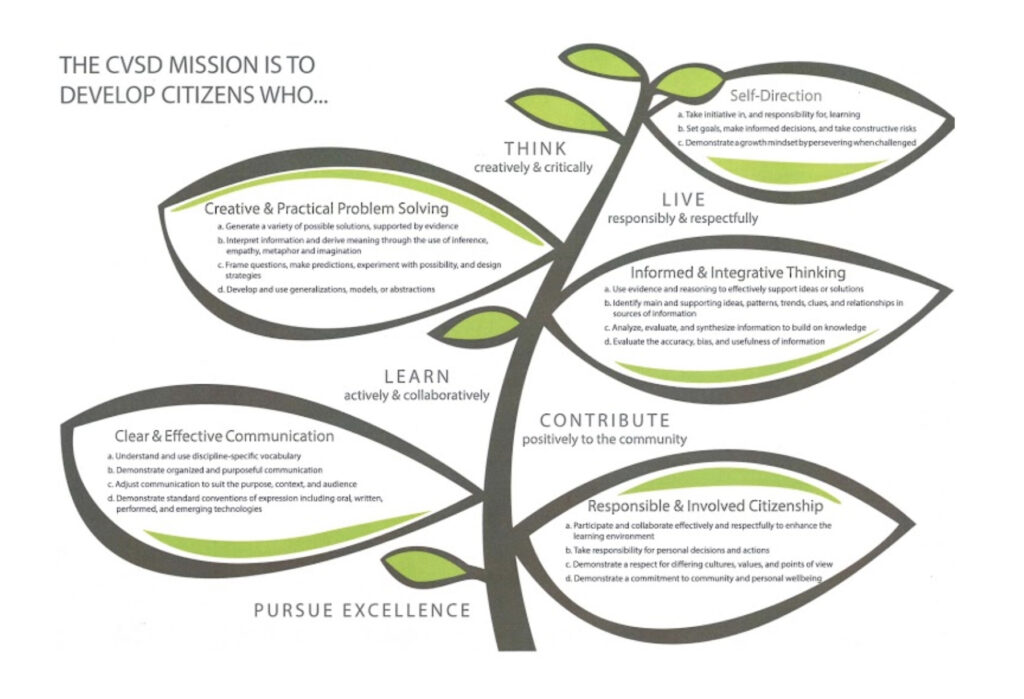
We’re having students pick one of those transferable skills as their goal, to really help them see the cross-curricular piece of all the transferable skills. It was much harder to track them last year when a kid had a personal goal of scoring in the soccer season, because then they were like, well, it’s not soccer season right now. So we have no evidence this week. Most importantly, what we’re doing with intentionality is having them take a deeper dive into that transferrable skill, see it spread across their day and outside of their life in school rather than having them pick a personal goal, an academic goal, and trying to juggle the two. Pick one goal and let’s go deeper on that and see it kind of come through in all your classes.
What did we accomplish?
Mr. Willis: If you had to choose now and or say at the end of the work that we’ve done over the last couple of months, do you feel like you have more choice now?
Hudson: Yes, like I said before, I thought it was just writing for a long time. Now, I have like three or four new choices that I can do.
Mr. Willis: What does that feel like, in terms of when the assignment comes now?
Hudson: I can just think into it instead of thinking, oh, I have to write again. Do another sketch here or maybe do a video recording.
Mr. Bailey: You were saying in the lobby that it kind of feels more freeing. That you’re able to think more about what you want to say in the reflection, rather than having to worry about making it fit into a writing piece.
Mr. Willis: Right.
Mr. Bailey: He’s able to focus much more on actually what he wants to say and the quality of the reflection, because he’s not having to try to figure out how to do a high quality reflection and then transfer that as a writing piece. Additionally, I did use Let’s Recap as a way of having students reflect on: how do you feel about the newer choices?
What’s next?
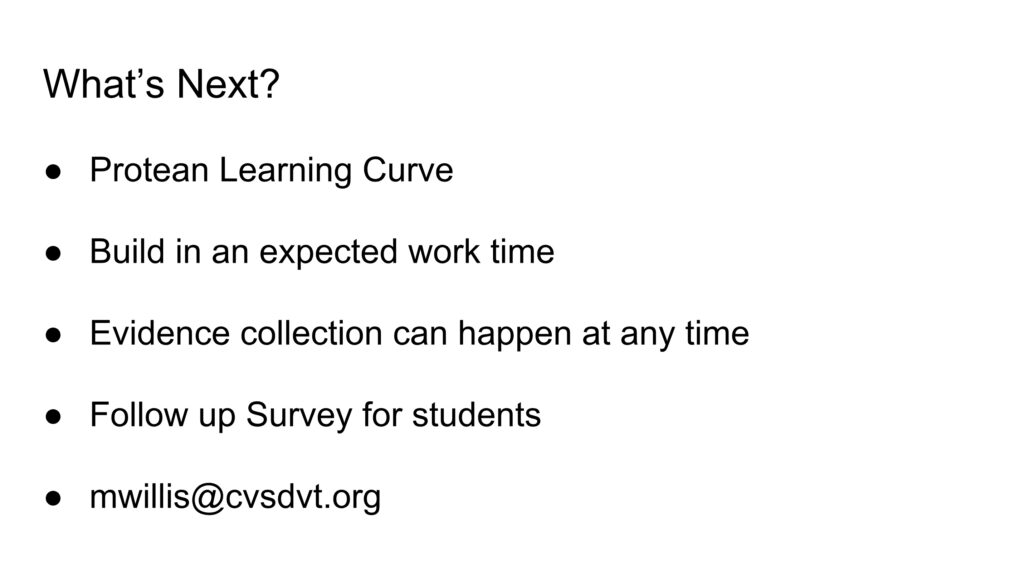 For me, the Protean learning curve is what we all need to keep working on. I think just the micro of it, the minutia of sharing and making it public? Just the pieces of that. As I’ve heard from a lot of workshops, finding more time to do it is tricky, and that’s what makes me think that this evidence collection needs to be able to happen anytime. I’ve yet to really do that as well as I want to. I do want to give an actual survey using Google Forms, but the video feedback is what I use for now. I don’t know if people are familiar with Protean or if you’re using it, but these videos and sketchnotes can be uploaded right into the evidence of a PLP in Protean.
For me, the Protean learning curve is what we all need to keep working on. I think just the micro of it, the minutia of sharing and making it public? Just the pieces of that. As I’ve heard from a lot of workshops, finding more time to do it is tricky, and that’s what makes me think that this evidence collection needs to be able to happen anytime. I’ve yet to really do that as well as I want to. I do want to give an actual survey using Google Forms, but the video feedback is what I use for now. I don’t know if people are familiar with Protean or if you’re using it, but these videos and sketchnotes can be uploaded right into the evidence of a PLP in Protean.
These are flexible pathways for reflection
Kind of like taking a flexible pathway and putting it in a flexible pathway! It’s that idea of if we’re going to give students flexible pathways for learning, let’s give them flexible pathways for reflecting on their learning. Subsequently, what we found at Sterling and what Michael’s brought to the table and is his year with us, is this idea of giving them multiple cause. We were so text driven in their reflections. However, that doesn’t really seem to fit with the philosophy of a personalized learning plan.
The idea is to find tools that make you successful and to learn how to play to those strengths. As a result, coming up with a variety of options for reflecting on a personalized learning plan is a light bulb moment for us and the rest of the team. So that’s been great.
Hudson, thank you for coming. I appreciate you presenting with me. Thank you very much.
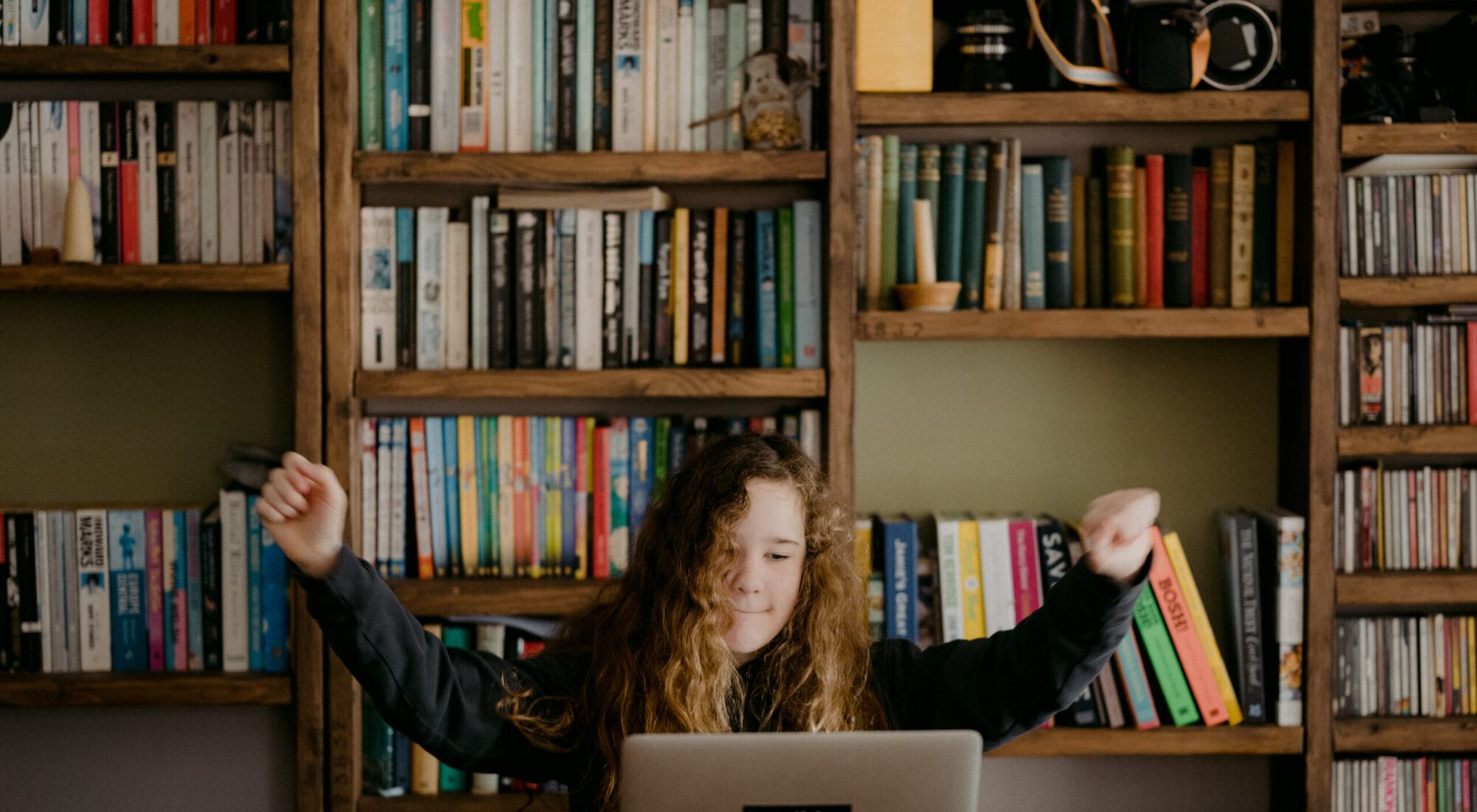

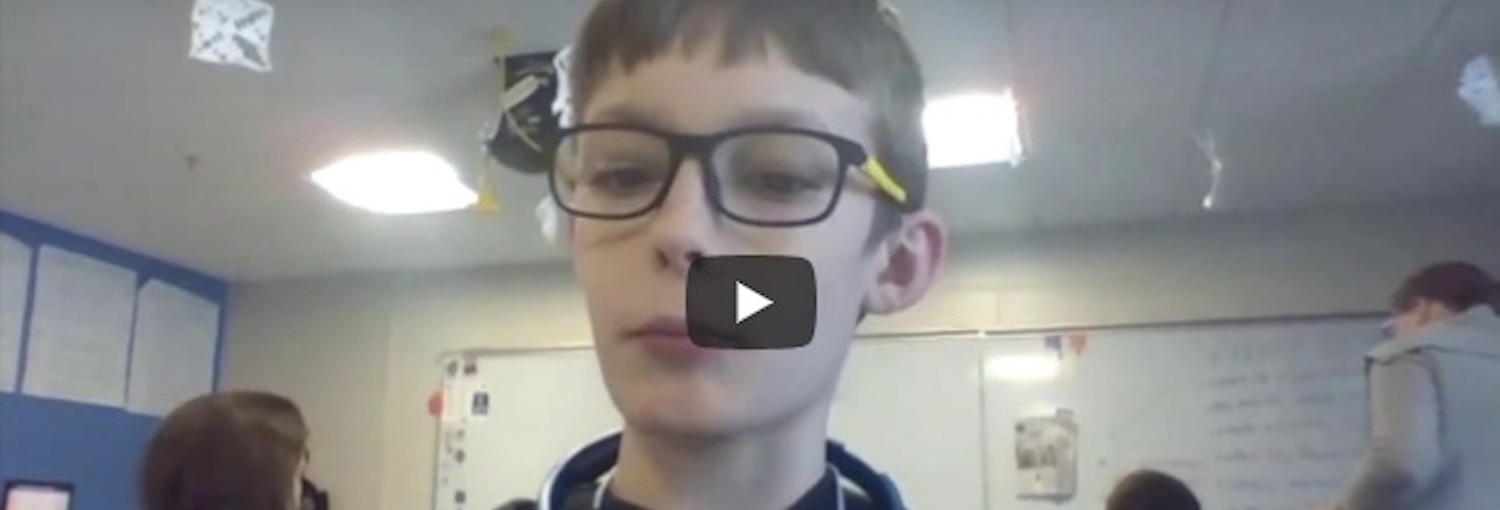
Can you be more specific about the content of your article? After reading it, I still have some doubts. Hope you can help me.